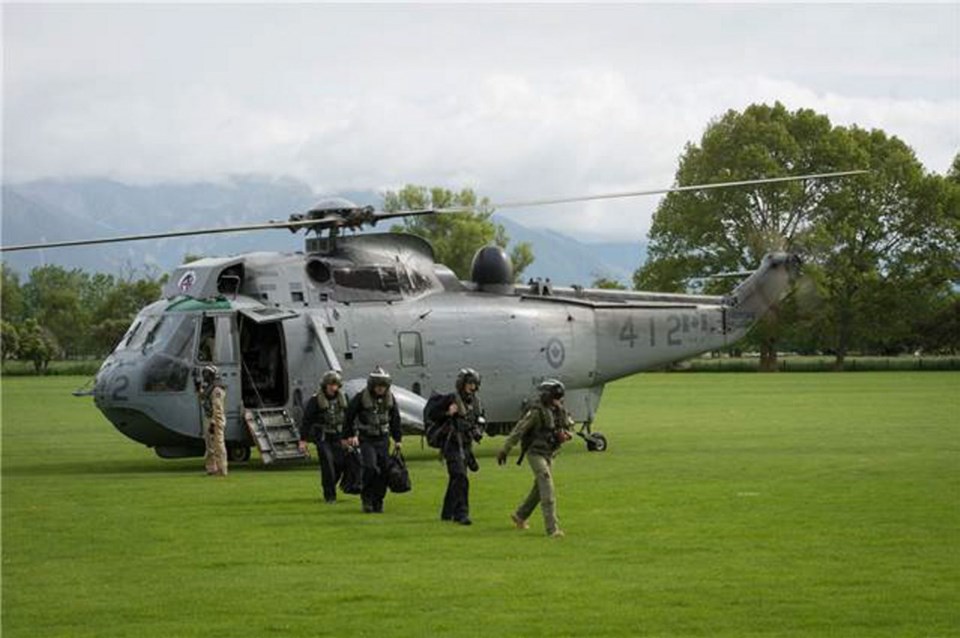One of the surprises for evacuees following New Zealand’s earthquake might have been the Canadian accents and the uniforms of sailors helping out.
“The reaction was maybe a bit of a surprise ‘These Canadians down here are a long way from home,’ ” said Cmdr. Clive Butler, captain of HMCS Vancouver, in a phone interview Friday.
Butler said the emergency relief effort seems to be winding down and he expects the ship to leave New Zealand waters in the coming days. The operation is moving into a stabilization phase since roads have been cleared into the most severely hit area, and supplies and trucks are getting through.
He said most a small boat crew from HMCS Vancouver ferried evacuees out to HMNZS Canterbury, a heavy sealift supply vessel of the New Zealand Navy.
Esquimalt-based HMCS Vancouver has been one of five naval vessels delivering disaster relief following the magnitude-7.8 earthquake that struck on Monday. Other ships taking part include two from New Zealand, one from the U.S. and one from Australia.
The non-New Zealand vessels were already in the waters of the South Pacific country to be part of its International Fleet Review celebrating the 75th anniversary of the Royal New Zealand Navy.
For HMCS Vancouver, it is the end of a nearly six-month tour that has seen the ship take part in two major international exercises, including the American-led RIMPAC, the largest multi-country maritime exercise in the world.
Butler said despite the length of the tour, and the goodwill nature of its later portion, HMCS Vancouver’s crew has responded with nothing but good morale and enthusiasm to the earthquake mission.
“Yes, we are at the end of a long deployment, but the crew’s morale is really high,” he said. “They are all available to get in there and help out.
“We are delivering a good effect, efficiently and capably,” said Butler. “When people are given the opportunity to do that, it renews their energy like nothing else.”
Initially, the vessel’s helicopter was part of a large-scale effort carrying in tonnes of supplies — everything from food to water to chemical toilets — to assist people stranded by the quake.
Several units from its approximately 225-member crew were sent ashore to do things such as digging out water mains, sewers and roads.
Butler said HMCS Vancouver always carries gear and trained people on board to deal with humanitarian or disaster relief.
“So even though we were out here doing the goodwill thing, we were also ready to react to any Government of Canada directions,” he said. “There is always the understanding when these kinds of things happen, we must be ready to respond.”
He said Kaikoura is mostly served by a single coast road, and much of it was wiped away in the earthquake, along with more narrow roads through mountains.
“When we look out at the coastline we can see all these great landslides,” said Butler.



